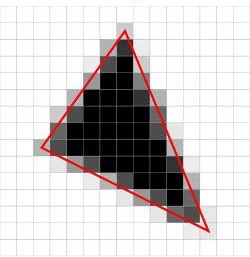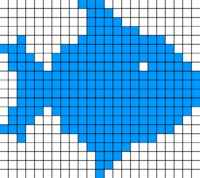Introduction
Advanced display systems utilizes the technique of rasterization to convert electronic information or transmissions into projected visuals, such as videos or still images. It is frequently used to determine a media configuration’s requirements before assigning resources to ensure that the pictures are effectively reflected on the digital display (Angel & Shreiner, 2015).
Raster images are basically formed by dots, lines, or pixels, that when the compilation is projected collectively, they produce the impression that was formerly depicted by the forms. Each dot has a distinct color, and after all of these dots are combined, they form a picture. Unlike rasterized graphics, which are comprised of dots, vector visuals are composed of mathematical calculations and can be adjusted to any size (Teschner, n.d.). Rasterizing a picture is important because layers and images with gathered information (such as fill layers) cannot be created with painting equipment or drawn with paint filters (Teschner, n.d.). Apart from the above visuals, vector data is the other group of objects that are generated through rasterization. The above include text and shape layers, vector masks, as well as other numerous artificial items.
Discussion
Therefore, in order to utilize the complete set of pictorial editing tools, vector graphics should be rasterized. The above can be used to create flattened, non-editable, non-variable data formats with a defined connection with their background whenever the output necessitates it, preventing unauthorized copying of elements or even the utilized fonts. A perfect example of rasterization is where the procedure is used in real-time 2D and 3D graphics processing to swiftly transform images for displaying on a monitor screen, as well as utilized when editing still multimedia. In this way, simulated triangles or polygons are used to form a mesh of 3D-looking items on the monitor (Teschner, n.d.). The corners of each triangle, referred to as vertices in this digital mesh, meet with the vertices of other triangles of various shapes and dimensions, as seen in figures 1 and 2 below.


Conclusion
However, raster images or visuals cannot be expanded without degrading the graphic that is being generated, even though this may be allowed within certain bounds. Thus, when a rasterized graphic is enlarged, the application usually creates new pixels and combine them together, which lowers the quality (Teschner, n.d.). Therefore, most individuals prefer to start by expanding the image and preserving the larger version as a masterpiece, and then reduce to small pieces.
References
Angel, E., & Shreiner, D. (2015). Interactive computer graphics: A top-down approach with WebGL (7th ed.). Boston, MA. Pearson
Teschner, M. Image processing and computer graphics rasterization.University of Freiburg – Computer Science Department, 1-45. Web.